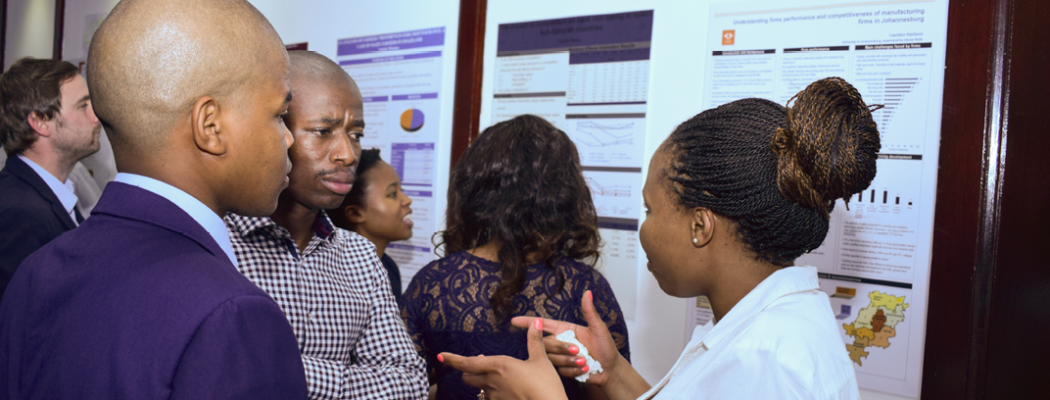Internal migration and energy poverty in South Africa
Modern energy access is an important necessary condition for long-term economic development. This work presents a first analysis of the relationship between rural-urban migration and energy poverty in South Africa, using the National Income Dynamics Study (NIDS) which follows the same sample over a ten-year period, thus enabling the analysis of energy poverty gains from migration
Decline in energy poverty in rural and urban areas since 2008 has outpaced that of monetary poverty. Energy poverty has fallen more rapidly in rural than urban areas despite higher energy access in urban areas.
Between 2008 and 2017 urban areas experienced an influx of residents, with about 19% of rural residents in 2008 moving to an urban area at some stage and more than 50% of rural residents affected by out-migration by someone in their household.
On average, individuals who move from rural to urban areas experience a more rapid decline in energy poverty than those who did not migrate to urban areas. The key driver of this decline is the adoption of modern cooking fuels.
Nearly one third of rural-urban migrants move into some form of informal dwelling. Rural-urban migrants who move into urban freestanding or backyard shacks do not experience significant energy poverty reductions relative to rural stayers.
Urbanization and energy access
Energy access has numerous positive spillovers for areas of well-being, including income, health, women’s empowerment, education, household energy use satisfaction and basic appliance ownership, causing it to be a “golden thread” in connecting various development outcomes. Many large-scale societal transitions, such as the one required to bring about an end to energy poverty in developing regions, have historically been associated with urbanization. However, rapid urbanization also poses a significant challenge to often under-capacitated local authorities that struggle to provide services to new urban dwellers. In the case of South Africa and other Sub-Saharan African countries, this has resulted in a proliferation of under-serviced informal settlements on the urban periphery, where a lack of energy access is compounded by a lack of access to other services and job opportunities, resulting in sites of concentrated and multidimensional deprivation.
Measuring energy poverty
The Multidimensional Energy Poverty Index is used to create a generalized measure of energy poverty and compare the differences in energy poverty before and after migration, between migrants and non-migrants. This allows the quantification of the impact of migration on energy poverty. The index is a weighted sum of six different household energy variables: the use of modern cooking fuels, access to the grid, ownership of a modern cookstove, ownership of a fridge, ownership of a telephone or cellphone, and ownership of a radio or television.
How widespread is rural-urban migration in South Africa today?
Roughly one in five NIDS rural residents in 2008 were observed to migrate to an urban area (and be resident there) at some point between 2008 and 2017. In addition, just over half of individuals resident in rural households were affected by out-migration of one or more household members.
Does rural-urban migration result in significant additional declines in energy poverty?
Despite service-delivery challenges facing many local municipalities and indeed rural-urban migrants themselves, there exist clear gains in energy access from migrating to urban areas for the majority of individual migrants. These gains are additional to per-capita expenditure gains found by other studies.
A key mechanism driving energy poverty declines is the change in cooking fuel used between rural and urban areas. Rural residents are likely to have both the time and access to forest resources to collect wood and other traditional fuels. In urban areas, these resources are much more limited, necessitating a move “up the energy ladder” by switching to fuels such as electricity, paraffin/kerosene and gas.
Energy access in informal urban settlements should receive more attention
Energy poverty gains from migration are driven by improvements for migrants moving into formal urban dwellings. A substantial share (30%) of new urban arrivals from rural areas, however, move into some form of informal housing, with 20% living in either freestanding or backyard shacks. For this latter group, there are no clear additional gains in energy access relative to rural stayers. Backyard shacks, however, present an opportunity to improve safe energy access, due to their proximity to formal households with safe grid connections.
Reducing energy poverty should be an additional target to reducing monetary poverty, given its implications for well-being.
Encouraging investment and upgrading of backyard shacks near existing, safe grid connections may provide a relatively low-cost solution to increasing energy access.
Informal urban settlements remain a key challenge for universal energy access. Given the social gains associated with energy access, extending grid infrastructure to informal settlements can significantly improve livelihoods at relatively low cost, given their density and proximity to other formal urban settlements.
Rapid change in energy access in rural areas over the past decade
Energy access is also improving rapidly in rural South Africa, due to increases in electrification and the spread of low-cost electrical appliances into rural areas. Given the consistently large difference in monetary poverty headcounts between rural and urban areas (close to 25%), one might expect large differences in energy poverty as well. Encouragingly, however, energy poverty has not been as stagnant as monetary poverty in South Africa. This reiterates the point that a reliance on monetary measures alone hides changes in other aspects of well-being. It also suggests that energy poverty reductions due to internal migration may be even more pronounced in other African countries, where rural electrification is taking place at a much slower pace. Household cooking fuel choices are slow to change, however, despite the rapid increase in appliance ownership and grid connections in rural areas. This finding suggests that targeted policies would be necessary to encourage substitution.





